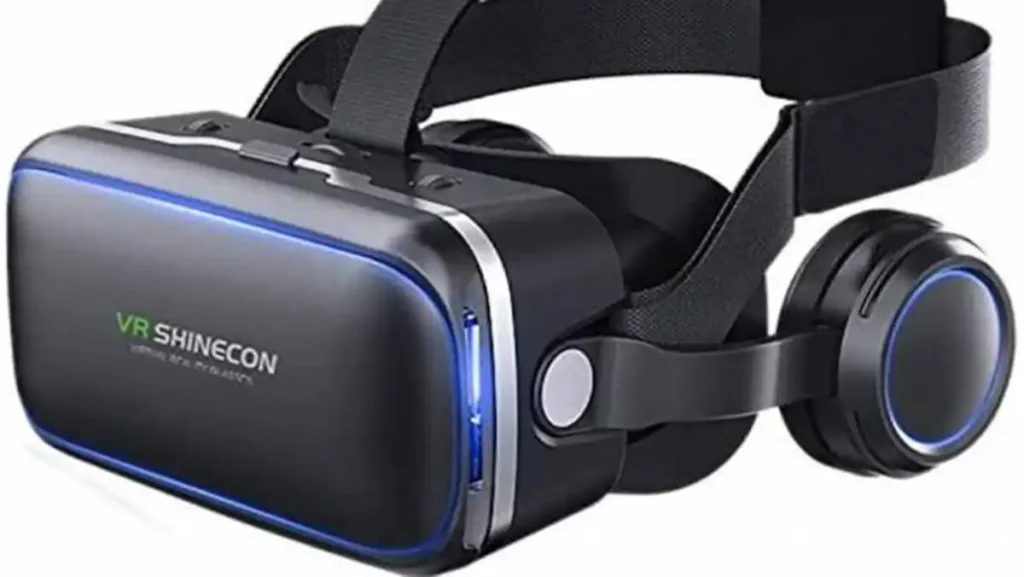Vr app for vr shinecon
The VR Shinecon is an affordable VR headset ideal for beginners seeking to explore VR on a budget. It is lightweight, comfortable, and works with most smartphones.
However, its limited visual quality and narrow field of view limit its potential for immersive experiences.
Virtual Reality Headset
VR with the Shinecon headset immerses you in virtual worlds by combining realistic visuals and 3D sound, providing an accessible introduction to this technology segment.
The VR Shinecon headset displays virtual content through its built-in screen and lenses, creating a 3D view for users. It features an adjustable head strap and cushioned fit for comfort and uses your smartphone to run VR apps, offering an approachable and affordable VR hardware solution.
The VR Shinecon uses smartphone sensors to track motion, which helps synchronize display updates with your head movements. This is important for a smooth, realistic viewing experience on an entry-level headset.
When using a headset, stay in an open area to prevent tripping or falling. Remove the headset if you feel dizzy or nauseated.
With the Shinecon, wheels on either side allow users to adjust pupil and object distance, accommodating various vision needs and head sizes, increasing its accessibility.
The Shinecon headset features a comfortable fit with soft PU foam padding, adjustable straps, and an ergonomic design, enhancing comfort for gaming, movies, and presentations.
Virtual reality headsets like Shinecon offer a fully immersive experience, replacing the real world with computer-generated environments to create credible simulations.

3D Glasses
A pair of 3D glasses is required to watch movies, videos, and TV shows that are produced in three dimensions. This is because ordinary flat images only offer height and width. The special glasses that you wear when watching 3D films stream two contrasting images to your eyes, bringing them to life and giving the impression that they are jumping out of the screen.
There are a few different types of 3D glasses, including anaglyph, polarized, and shutter glasses. Anaglyph 3D glasses are the most common type and the ones that many people think of when they hear the term “3D glasses.” These glasses feature two lenses that color-filter the layered image you are viewing. One lens filters out red, and the other filter removes cyan from the picture, which causes your brain to interpret the images as 3D.
Polarized 3D glasses, like those in IMAX theaters, use dark-tinted material. They use circular polarizers for each eye, allowing color viewing and reducing binocular rivalry seen in anaglyph 3D.
The 3D technology used in polarized glasses is actually based on the fact that electromagnetic waves have a natural polarization. The polarizers in your eyeglasses are designed to match the polarization of the projector’s circular polarizing filters. When the two polarized images are projected on the screen simultaneously, they alternate with each other. Each eye sees only one of the images, creating the illusion of depth.
Several 3D glasses types are sold at hardware and discount stores. Most 3D TVs work with them. If the glasses are uncomfortable, avoid prolonged use to prevent headaches or nausea. Consult your optometrist if necessary.

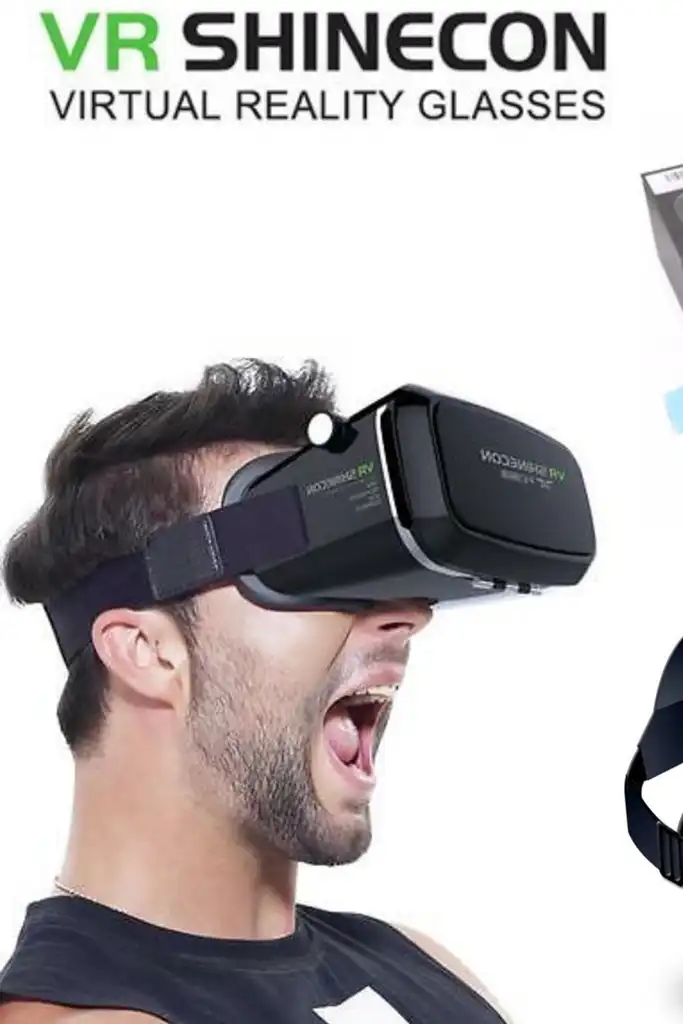
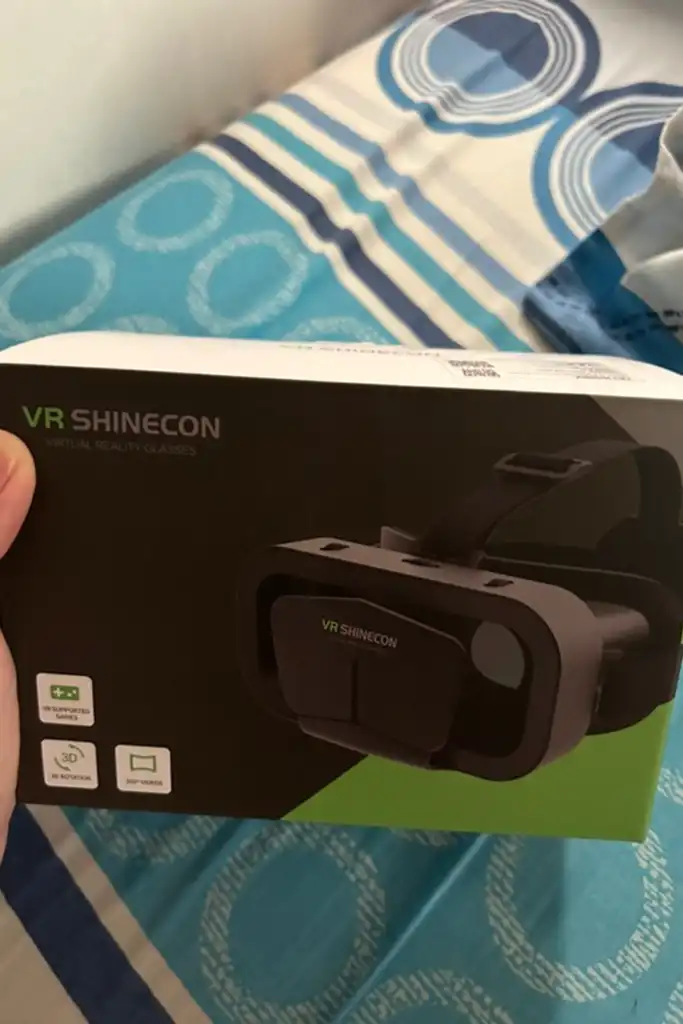
Headset Helmet
The SHINECON needs almost no setup to get started and earned the top score for this metric. There are no special drivers or software to download, and getting the hardware ready to use involves little more than removing some of the protective plastic films from the lenses.
It’s also easy to get your phone in and out of the headset, which was a big plus. It can accommodate phones with cases as thick as 6 mm and features knobs on both sides that let you adjust pupil distance and object distance to tweak how close the lens is to your phone’s display.
Aligning your phone remains difficult, and keeping it centered is challenging. Cheaper headsets, like Bnext and Canbor, offer better performance. The SHINECON lacks a handheld controller or voice command support, which is disappointing and puts it behind competitors.

VR Goggles
With the VR Shinecon, if you have a compatible smartphone, you can enjoy immersive VR at home. Setup is simple—just insert your phone, download a VR app, and begin experiencing virtual content.
This headset ranked last overall but had one advantage over Bnext and Canbor: user-friendliness. We never accidentally hit buttons, and the SHINECON fits most phone cases. Its main flaw was the latch, which pops open if flexed or moved too much.
The headset has a built-in light sensor, which automatically adjusts the display brightness to minimize eyestrain. It also offers pupil and focal distance adjustments to accommodate users with different vision needs. It’s designed to be compatible with nearsighted people, and the viewer can even wear glasses while using it. Moreover, the headset is equipped with a head strap that ensures comfortable wearing throughout use. Lastly, the manufacturer provides a comprehensive user manual and after-sales service.
Comfortable
The VR Shinecon is a great entry-level VR headset delivering comfort and value. Its lightweight design and adjustable straps fit a range of head sizes, and foam padding keeps it secure during longer use. For more advanced users, keep in mind that its visual quality and field of view are limited compared to higher-end models.
Designed for smartphones up to 6.5 inches, Shinecon works with iOS and Android devices. The front swings open for phone insertion, and lenses are adjustable for interpupillary distance.
One of the headset’s main strengths is its minimal setup—just download a VR app, insert a compatible smartphone, and it’s ready for use. Its lightweight design helps with comfort during extended use.
The Shinecon includes basic controls—physical buttons for confirmation, play/pause, and next/previous. This allows you to watch 360 YouTube videos and use simple VR apps without a separate controller. It supports 3-DOF motion tracking, but performance depends on the smartphone.
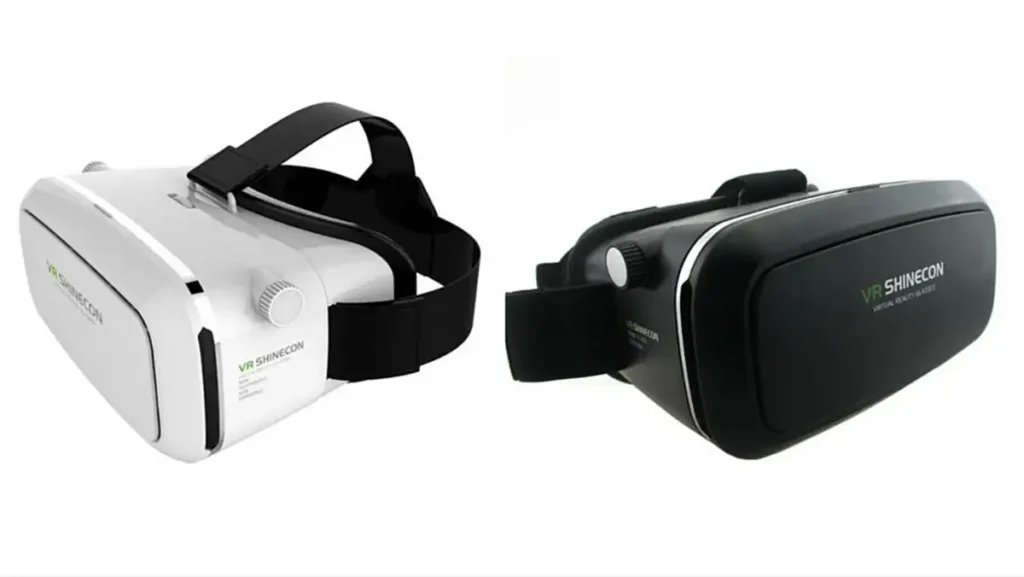
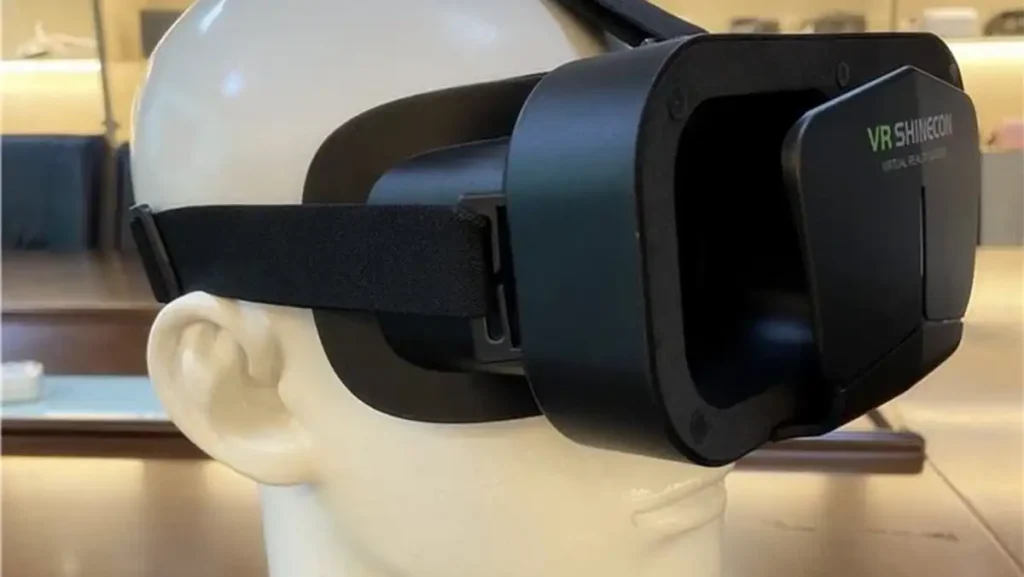
Frequently Asked Questions
This headset supports smartphones with screens from 4.7 to 7.2 inches. Setup is minimal: power it on, load a VR app, and enjoy the soft foam padding for comfort.
Clean the lenses with a damp cloth. Adjust for a clear image as needed.
How do I adjust the head straps?
To adjust the head straps, loosen the rear split straps, then tighten the top strap to reduce facial pressure and keep the headset secure. Use the lens adjustment wheel for lens distance. If you wear glasses, insert the eye-relief buttons before adjusting depth settings.

